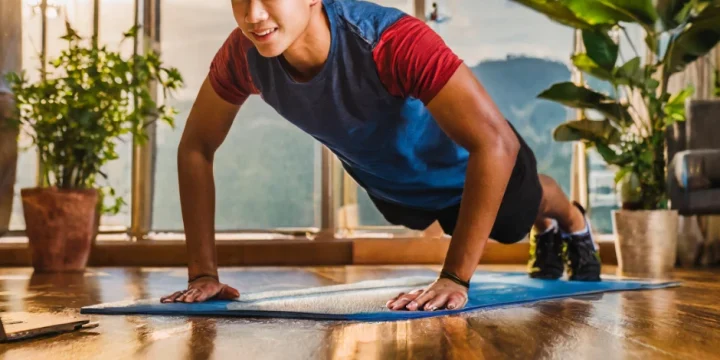To improve flexibility and prevent injuries, it's essential to incorporate proper stretching routines into your workouts.
But I often see people make mistakes when it comes to balancing active stretching with static stretches.
The biggest mistakes usually come with static stretching.
Common mistakes in static stretching can impact flexibility and injury prevention.
Here’s what you need to know.
Quick Summary
- To improve flexibility and prevent injuries, it's essential to incorporate proper stretching routines into your workouts.
- Stretching reduces the chances of injuries and also helps make the best out of your workout routines.
- It's recommended to hold stretches in each muscle group for up to 60 seconds for optimal results.
- In my personal opinion, balancing active and static stretches effectively is key to an effective exercise routine.
How Long Is It Safe To Hold Stretches?

The following are some guidelines you should follow for stretches that you do on all muscle groups.
In my experience, regardless of whether I'm focusing on leg or chest exercises, the approach to stretching remains consistent. I've found that treating all muscle groups with equal attention during stretching has significantly improved my overall flexibility and reduced post-workout soreness.
Proper positioning during stretching reduces injury risk and enhances workout effectiveness.
Maximum Time

Hold stretches for each muscle group for up to 60 seconds for optimal results.
My physio friend sent me an interesting study published by the University of Delaware in which the results confirmed 1 minute to be a good threshold [1].
The more uncomfortable it is for you to hold the position of a static stretch, the better indication it is that you lack flexibility there.
The longer you can hold the stretch at that site, and the number of repetitions will both have positive effects.
Take Breaks

Many people who head for a training session to the gym seem to be in a rush to get their muscles working.
Avoid rushing stretches; instead, relax between stretches for full benefits.
Don’t Push Your Body Too Far

No matter what muscle-tendon groups you’re working on, don’t push yourself beyond a pain barrier to force a longer range of motion.
It’ll guarantee you an expensive trip for treatment by the physio service and could keep you away from exercise for quite some time.
Instead, repeat the stretching exercise a few more times per week to improve how your body reacts.
Slow is the name of the game, just like with general health and fitness.
When Is The Best Time To Stretch?

There are two specific times that research indicates are best suited to stretching.
Part Of Warm-Up Routine
You should warm up your muscles before every workout and exercise class.
Use low-impact movements to enhance blood flow throughout the body.
Once your muscles are warm, give them a stretch all the way from your hamstring and through your back to the tendons in your hands.
Part Of Recovery Time
Flexibility exercises are great for a post-workout cool down as well as your rest days.
Personally, I’ve started a habit to de-stress my body on a rest day with products like a foam roller and light stretching.
Not only does it help with my range of motion, but it can give you a mental health benefit as well.
Incorporating flexibility exercises during recovery time, such as yoga or Pilates, can further enhance muscle relaxation and reduce the risk of injury, complementing the physical benefits with mental relaxation and stress reduction.
Read More: 4 Types Of Pre-Workout Stretches
Health And Workout Benefits Of Regular Stretching

Every time you stretch your limbs, torso, and back, you gain significant health benefits. And not all of them might be obvious.
1. Increase Flexibility
The safe range of motion plays a key role in sports and for a gym workout session.
Regular stretching significantly improves joint flexibility and reduces pain and stiffness.
Adding a variety of stretches to a workout regimen can lead to significant improvements.
2. Improve Circulation
Basic stretches effectively increase blood flow, even without advanced poses.
It’s not that your heart rate goes up, but with the stretching and contraction of muscle tissue, your blood can flow more freely.
And when you follow the advice to take deep breaths, you’ll increase the amount of oxygen flowing as well.
Improved circulation from stretching prepares you better for intense workouts.
3. Speed Up Recovery
Stretching plays a vital role in response to post-workout recovery times.
Stretching enhances both mental and physical wellness, reducing injury risk and clarifying your fitness goals.
I also find that a good rest day stretch helps me access better endurance in my next gym activities.
“Stretching is an important step for preparing your body for a workout or cooling it down afterward. It helps to keep the “muscles flexible, strong, and healthy, and we need that flexibility to maintain a range of motion in the joints.” - OneGreenPlanet.org.
FAQs
Can You Hold a Stretch for Too Long?
Yes, you can hold stretches for too long. The result can be pain and discomfort that lasts longer than the stretch and even damage muscle fibers. Based on advice from experts, it’s generally best to avoid holding it for more than 60 seconds.
Is It Ok to Stretch Every Day?
Yes, it’s OK to stretch every day. Athletes can gain a lot more mobility in their hips and all other joints that they focus on, improving their overall health, well-being, and athletic performance.
References:
- https://sites.udel.edu/coe-engex/2018/02/27/holding-your-stretch-is-holding-you-back/
About The Author
You May Also Like






